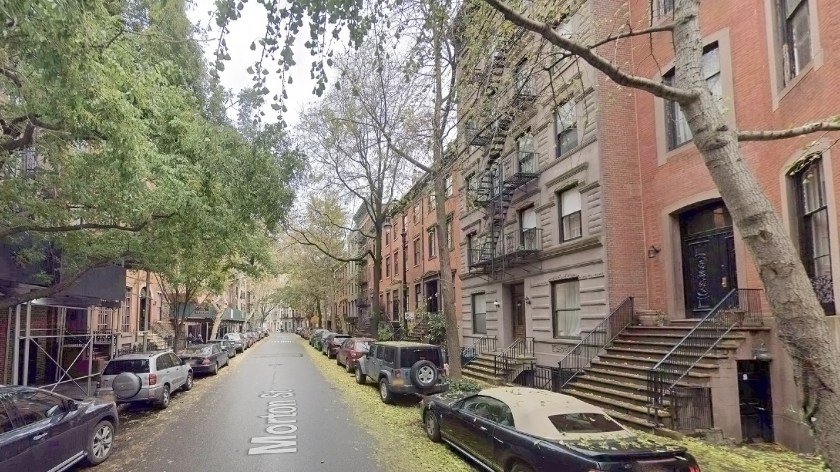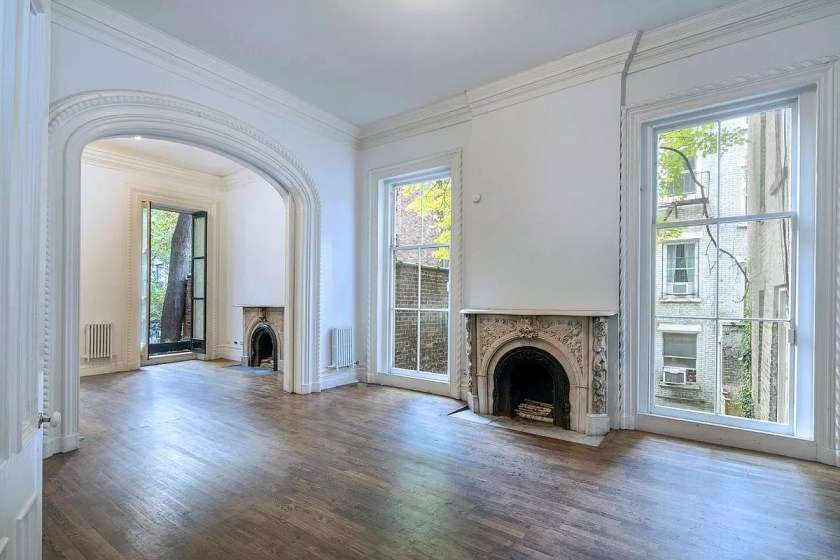Official Video
Detelecined to 24 fps and Restored from the DVD Master
THE ORIGINAL AUDIO HAS BEEN MUTED DUE TO A COPYRIGHT CLAIM.
Song Credits
| Songwriters | Madonna Ciccone |
| Shep Pettibone | |
| Anthony Shimkin | |
| Producers | Madonna Ciccone |
| Shep Pettibone | |
| Recording Engineer | P. Dennis Mitchell |
| Robin Hancock | |
| Mix Engineer | Goh Hotoda |
| Recording Studio | Soundworks. New York |
| Assistant Engineer | Mark Goodman |
| Mastering Engineer | Ted Jensen. Sterling Sound |
| Vocals | Madonna |
| Sequencing, Keyboards, Programming | Shep Pettibone |
| Anthony Shimkin | |
| Additional Keyboards | Joe Moskowitz |
Song Technical Specifications
| Album Version Length | 5:23 (m:s) |
| Single Version Length | 4:34 (m:s) |
| Extended Mix Length | 6:29 (m:s) |
Song Production Details
| Genre | Pop, R&B |
| Song Recording Date | November 1991 |
| Album Release Date | October 20, 1992 |
| Single Release Date (3rd single) | February 2, 1993 |
| Album | Erotica |
| Label | Maverick / Sire / Warner Bros. |
Credits
| Director | David Fincher |
| Producer | Oliver Fuselier. Propaganda Films |
| Production Companies | Propaganda Films |
| Maverick Records | |
| Maverick Films | |
| Sire Records | |
| Warner Bros. Records | |
| Director of Photography | Juan Ruiz Anchía, ASC |
| Production Designer | Jeffrey Beecroft |
| Editor | Bob Jenkis |
Cast
| Louise Oriole | Madonna |
| Guardian Angel | Christopher Walken |
| Stranger #1 | Tomas Arana |
| Bartender | Mark Margolis |
| Stranger #2 | Michael Massee |
| Stranger #3 | James Rebhorn |
| Strangler | Rob Campbell |
Technical Specifications
| Runtime | 6:07 (m:s) |
| Aspect Ratio | 1.85:1 |
| Acquisition | Film |
| Color | Color |
| Film Negative Format | 35 mm |
| Sound | Stereo |
| Home Media | DVD The Video Collection 93:99 November 9, 1999 |
Production Details
| Country | USA |
| Principal Photography Start | January 12, 1993 |
| Principal Photography End | January 18, 1993 |
| Music Video Release Date | February 8, 1993 |
| YouTube Release Date | October 26, 2009 |
Filming Locations
New York City, New York
Street and House (Exterior and Interiors)
66 Morton Street
New York, NY 10014
A townhome originally constructed in 1852 for the trustees of Trinity Church. The only house in the West Village that has a bow-fronted facade. It has served as the fictional homes of Harrison Ford in “Working Girl,” Matthew Broderick and Annabella Sciorra in “The Night We Never Met”, and Winona Ryder in “Autumn in New York”.
Click for a full screen view:











The Empire Diner (Interior)
210 10th Avenue
New York, NY 10011
Constructed in 1946 and refurbished in 1976, it launched a vogue for upscale retro diners. Frequented by famous actors, directors, and musicians, its Art Moderne exterior became an iconic image in numerous films, TV shows, and commercials.


The Sherry-Netherland Building (Exterior)
781 5th Avenue
New York, NY 10022
A 38-story apartment hotel constructed in 1927 in the Romanesque/Gothic Revival architectural style. It was noted as the tallest in New York City when it opened.

Old Town Bar (Exterior and Interior)
45 East 18th Street
New York, NY 10003
One of the oldest bars in the New York City area. It first opened in 1892. Its exterior and interior have been featured in numerous films, TV shows, and music videos.


Film References


Looking for Mr. Goodbar (Richard Brooks, 1977)
A school teacher in New York City, played by Diane Keaton, lives a rather self-destructive double life and is stabbed to death by a one-night stand.
Der Himmel über Berlin (Wings of Desire) (Wim Wenders, 1987)
Invisible, immortal guardian angels populate Berlin and listen to the thoughts of its human inhabitants, comforting the distressed. One of the angels, played by Bruno Ganz, falls in love with a beautiful, lonely trapeze artist, played by Solveig Dommartin.
Notes
Madonna plays the character “Louise Oriole”. Madonna’s middle name is Louise and Oriole is the name of the street she previously lived on.
I brokered a compromise between David and Madonna when he wanted a hard cut to silence in the middle of a phrase at the moment that Christopher Walken appears to her. His original concept was that Christopher was invisible to her while the track was playing and he wanted it to be a shock when all of a sudden the music stopped and she can see him.
Well, it was a little too abrupt for Madonna, so I came up with the idea of getting her vocal stem and controlling it separately over the music edit to soften the cut and eventually to lead us back into the full track.
Experiencing Music Video. Aesthetics and Cultural Context
Carol Vernallis
Columbia University Press, 2004
When, how far, and in what way the hero will fall can be more thinly sketched and therefore more appropriate to the genre. These videos work well because they are tragedies; they possess a hint of inevitability, as if the outcome were already embedded within the opening of the tape. Often, the hook line helps to focus our attention on the narrative trajectory, telling us what we already know will occur, and leading us inexorably to the main character’s unhappy fate. Accompanied by ominous visual imagery, the lyrics keep us moving forward. Another such example, “Bad Girl,” borrowed from the plot of the 1977 film Looking for Mr. Goodbar, is a video in which Madonna goes out with a number of stray men and is eventually murdered by one. The lyrics “bad girl” as well as iconic imagery let us predict the outcome as the singer passes through a series of tableaux: Madonna’s black dress, encased in dry cleaner’s plastic, looks like the body bag that she will eventually be wrapped in; her cat, who fails to recognize her, hisses like a wild animal, suggesting that she is already a ghost or a figure who bears a curse; and the singer walks through a doorway that looks like the entrance to Hades.
Dark Eye. The Films of David Fincher
James Swallow
Reynolds & Hearn Ltd, 2003
The director’s last video for the performer was shot three years later, after he had completed his work on Alien 3. From the Erotica album, ‘Bad Girl’ guest-starred Christopher Walken and The Game‘s James Rebhorn in a narrative following Madonna as a power-dressing executive driven to dangerous relationships. In a homage to the 1987 Wim Wenders film Wings of Desire, Walken is cast as an ethereal ‘angel of death’, following Madonna around New York City as she seeks solace in self-destructive casual sex. Again, Fincher’s effective use of imagery explores the plotline through economical storytelling – an excellent match-cut between a roadway and a bar top, the surreptitious removal of a wedding ring, an unbuttoned blouse, a refrigerator full of vodka, all setting up her eventual murder at the hands of one of her lovers. Like Fincher himself, Walken watches events unfold from a camera crane, playing with the idea of the director as the ‘god’ of a movie, and by the end of the video, Madonna has joined her angelic observer as they both watch the murder scene from a distance. Fincher had used a similar motif in ‘The Director’, an earlier commercial for Chanel.
Fincher’s work with the singer did much to cement her image at that time in the minds of her audience. “Madonna is Madonna,” the director notes, “but she’s also this foul-mouthed, funny, sincere girl from Detroit. There’s the thing that you’re selling and the thing that the people were – I’ve had some very bad experiences with artists, I’ve done really good work for those who really didn’t deserve it, and I’ve done really bad work for people who deserved so much more. But I’ve always liked musicians, I thought the people were incredibly stimulating. I really enjoyed [working with them] because they were so different from my experience. Some of the most interesting and most talented people I have ever worked with are musical artists.”
Photograph by Josef Sudek. Part of the series Veiled Woman (1942):

Behind the Scenes and Outtake
THE ORIGINAL AUDIO HAS BEEN MUTED DUE TO A COPYRIGHT CLAIM.
Click for a full-screen view:




















Le Journal Du Cinéma. “Body of Evidence” Promotion (Excerpt)

